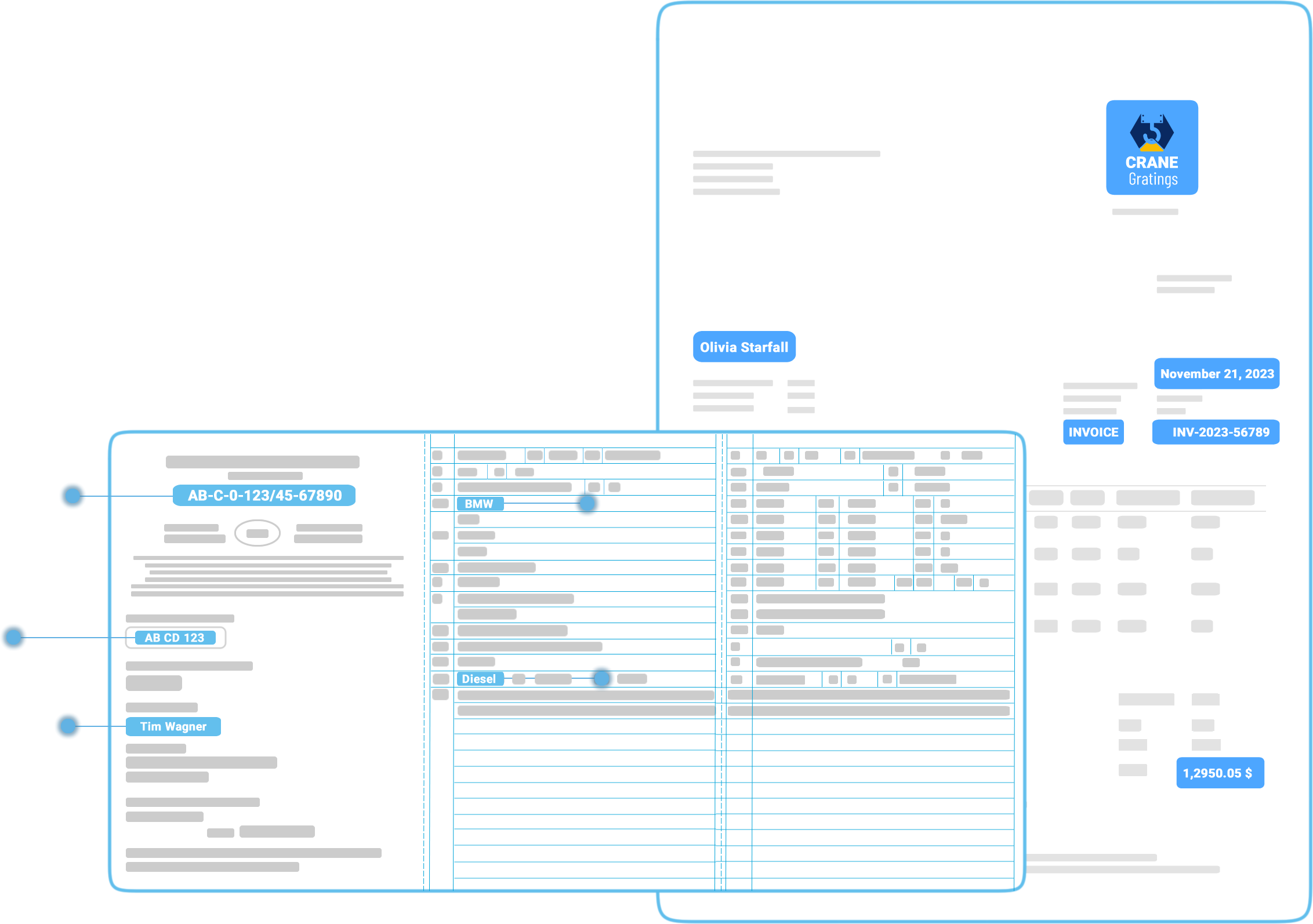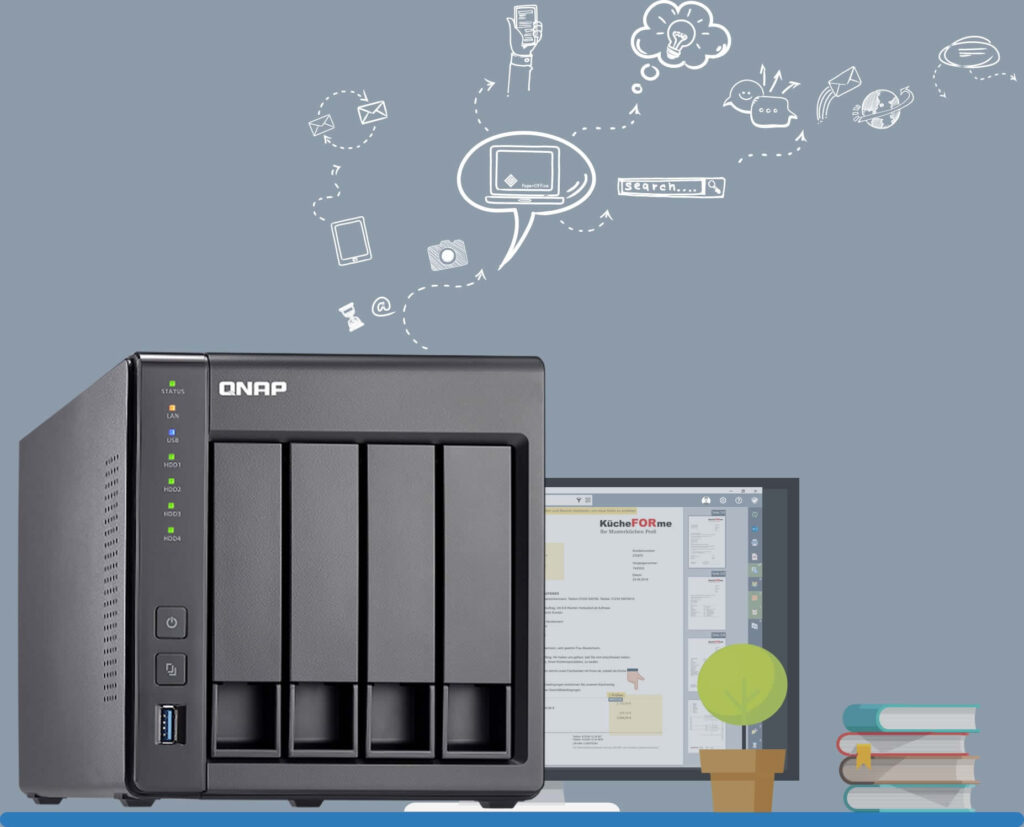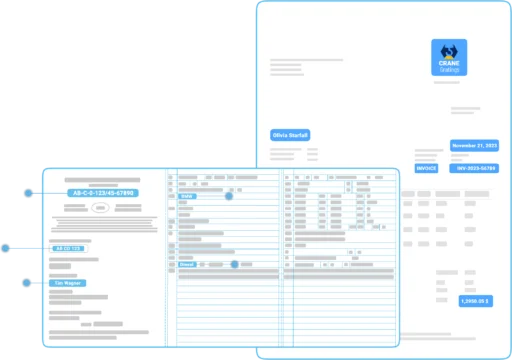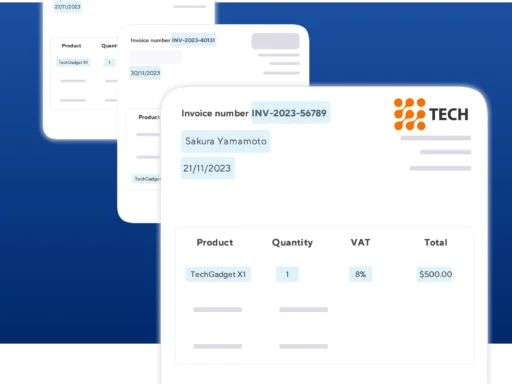At a time when data forms the backbone of business decisions, the efficient handling of this information is crucial. PaperOffice takes the data capture process to a new level and offers companies a comprehensive solution for optimizing their document management and processing.
Table of Contents
- Definition of the data capture process
- PaperOffice features and benefits: Automated analysis and processing
- Different Data Capture Systems
- Big Data Management with PaperOffice: Efficient mass Data Capture and Management of existing customer data
- Automated data capture and processing
- Centralized and local data management
- Integration and consolidation of data sources
- Automated classification and indexing
- Security and compliance
- Scalability and flexibility
- Conclusion
Definition of the data capture process
The Data Capture Process describes the systematic capture and processing of data within a company or organization. Information is collected from various sources, digitized and stored in a uniform format.

This process plays a central role in the modern business world as it forms the basis for effective data analysis, decision making and process optimization.
The four main steps of the data capture process:
Determine data: Companies must first decide which data should be captured. It is important to focus on relevant information in order to maximize the efficiency of the process.
Identify data sources: The sources from which the data comes are identified. This can be internal databases, external websites, emails or physical documents.
Capture data: The identified data is entered into the system either manually by employees or automatically using software. Automated tools such as OCR (Optical Character Recognition) and IDP (Intelligent Document Processing) play an important role here.
Save data: After capture, the data must be saved in a uniform format to facilitate later analysis and processing. Effective data capture management ensures that all data is stored correctly and uniformly.
This data can come from, for example,
- documents such as scans, photos, TIF or native PDF,
- emails,
- and other digital sources.
The goal is to analyze, process and archive company information to ensure that it can be easily found again.
PaperOffice features and benefits: Automated analysis and processing
One of PaperOffice’s outstanding benefits is its ability to automate data analysis and processing.
For example, if you insert a folder to be analyzed into PaperOffice, the system will automatically search the folders and subfolders for files.
These files are then broken down and the text is recognized using advanced OCR and ICR technologies. PaperOffice automatically extracts keywords and important information from the documents.
PaperOffice automatically recognizes which document it is: whether it is a contract, ID card or passport, bank statement or other type of receipt.

The system can then archive this data into the PaperOffice DMS (Document Management System), maintaining the original folder structure – all without human assistance.
Alternatively, the extracted data can be made available via an API so that it can be seamlessly integrated into third-party software.

This automation significantly reduces manual effort, improves data processing efficiency and enables fast and accurate analysis of large amounts of data.
Different Data Capture Systems
There are a variety of data capture systems used in different industries and applications. These systems differ in their functionality and technology to meet specific requirements.
For the efficient capture and management of documents and data in companies, PaperOffice uses, among others, the following advanced data capture systems:
Manual data capture: This method is suitable for companies with small, variable data volumes.
Data is manually entered into a digital system by employees, but this is prone to human error and can be time-consuming.
OCR (Optical Character Recognition): OCR technology recognizes and digitizes machine-generated characters and fonts from scanned documents and PDFs.
This method is often used in industries such as healthcare, insurance and finance, where large amounts of similar data are generated.
ICR (Intelligent Character Recognition): ICR extends the capabilities of OCR by recognizing handwritten characters in different fonts and converting them into digital data.
This technology is particularly useful for processing handwritten forms, which are often found in banks and financial organizations.
IDP (Intelligent Document Processing): IDP combines technologies such as Natural Language Processing (NLP) and OCR to analyze, sort and verify large amounts of data.
This method is often used to process invoices and other business-critical documents.
OMR (Optical Mark Recognition): OMR systems scan and recognize marked fields on forms such as those used in surveys, ballots and exams. This method facilitates the automatic evaluation of forms.
Big Data Management with PaperOffice: Efficient mass Data Capture and Management of existing customer data
In today’s data-driven world, managing large amounts of data, often referred to as Big Data, is crucial to business success.
PaperOffice offers a powerful mass data capture solution that is specifically designed to efficiently manage, process and store large amounts of existing customer data locally at the customer’s premises.
Unlike many other solutions, PaperOffice does not use cloud services to store customer data. This guarantees the highest level of security and data protection, as the data remains completely under the company’s control.
This functionality is particularly valuable for companies that want to update, analyze and optimize their databases to improve customer loyalty and increase operational efficiency.
Automated data capture and processing
PaperOffice enables the automatic capture and processing of large amounts of customer data. By leveraging advanced technologies such as Optical Character Recognition (OCR) and Intelligent Character Recognition (ICR), text content from both machine-generated and handwritten documents can be digitized quickly and accurately.
This not only saves time, but also reduces human errors and increases data accuracy.
Centralized and local data management
A key feature of PaperOffice is the central storage and management of all captured data directly at the customer’s premises. This means that all data is stored locally on the customer’s corporate servers or NAS (Network Attached Storage) devices, which significantly improves security and data protection.
PaperOffice supports integration and storage on NAS devices from leading manufacturers such as Synology, Asustor and QNAP, providing a robust and scalable data management solution.

In addition, PaperOffice is the global exclusive partner of QNAP https://www.qnap.com/paperoffice and Asustor https://www.asustor.com/partner/paperoffice, which means you can benefit from optimized integrations and special features.
Find out how to best use PaperOffice DMS with your Asustor NAS in our detailed post.
Integration and consolidation of data sources
PaperOffice integrates data from a variety of sources, including ERP systems, CRM solutions and other business applications.
This seamless integration ensures that all relevant information is consolidated and centrally available, making data analysis and decision-making much easier.
Automated classification and indexing
With AI-powered document classification and indexing, PaperOffice can automatically sort and categorize large amounts of customer data.
Companies can set specific rules and criteria by which the data is classified, further increasing the efficiency and accuracy of data management.
Security and compliance
PaperOffice places great emphasis on security and regulatory compliance. All customer data collected is stored securely and protected by strict access controls.
This ensures that only authorized employees have access to sensitive information and that all data protection regulations, such as the GDPR, are adhered to.
Scalability and flexibility
PaperOffice is highly scalable and can easily be adapted to the needs of companies of all sizes. Whether small companies or large corporations – PaperOffice offers flexible options to optimally support mass data collection and processing.
This ensures that companies can continue to work efficiently as their data volumes grow.
Conclusion
PaperOffice integrates these different data capture technologies to provide companies with a comprehensive and efficient solution for capturing, processing and managing their documents.
By using these advanced systems, companies can manage their data more efficiently, improve accuracy and increase productivity. Discover the many possibilities of PaperOffice and optimize your document management today.
For more information and to experience the power of PaperOffice, visit www.paperoffice.com.
PaperOffice Trial Version
Test the award-winning PaperOffice for 14 days without obligation at:
https://www.paperoffice.com
Social Media
Facebook: https://www.facebook.com/paperoffice.en
Twitter: https://twitter.com/PaperOffice_en
PaperOffice ComDesk
Find out more at:
https://help-en.paperoffice.com
YouTube
► http://www.youtube.com/c/PaperOfficeEN
PaperOffice Blog
https://blog-en.paperoffice.com
PaperOffice Guide
Scanners and Document Management: Benefits and Uses: TOP 15 Reasons for Using a DMS
Benjamin Kluge ist seit über 6 Jahren bei PaperOffice im Bereich der Automatisierung dank KI-Implementierung tätig. In seiner Freizeit verfasst er Artikel über Intelligente Dokumentenverarbeitung (IDP) und teilt sein Fachwissen zu den neuesten Trends in der Automatisierung und künstlichen Intelligenz.








